Volvo's Torslanda Plant Becomes The Company's Newest Carbon Neutral Facility

- The Torlsanda facility is Volvo first car plant to be carbon neutral
- Volvo aims to reduce energy usage per car produced by 30% in 2023
- Volvo will make more efficiency upgrades to the plant to save 20,000 mWh
Volvo Cars has announced that its Torslanda facility in Sweden is the company's newest manufacturing plant to achieve a fully climate-neutral status. The announcement is in line with the automaker's ambition of making its global manufacturing network climate neutral by 2025. The Torslanda site is the second such facility to achieve the carbon-neutral status, after the Skovde engine plant in Sweden became climate-neutral in 2018. Volvo says it counts a manufacturing site as fully climate neutral when it registers zero net increase in the emission of greenhouse gases to the atmosphere as a result of the electricity and heating used by the plant.
Also Read: Volvo's Global Sales Increase By 97.3% In April 2021

The Volvo Torslanda plant has been using carbon-neutral electricity since 2008
Speaking about the new milestone, Javier Varela, head of industrial operations and quality at Volvo Cars, said, "Establishing Torslanda as our first climate-neutral car plant is a significant milestone. We are committed to having a climate-neutral manufacturing network by 2025 and this achievement is a sign of our determination as we consistently work to reduce our impact on the environment."
The Torslanda car plant is the company's oldest but has been powered by climate-neutral electricity since 2008. It now also has climate-neutral heating. Volvo says half of the plant's heating comes from biogas while the rest is largely sourced from district heating through industrial waste heat. In addition to the climate-neutral heating, the Torslanda facility also constantly reduces the amount of energy it uses. This has been achieved by targeted improvements in its operations during 2020, which helped in annualised energy savings of nearly 7000 Megawatt-hour (MWh), enough to power 450 Swedish family homes for a year.
Also Read: All-Electric Volvo XC40 Recharge Makes Its India Debut; Deliveries From October 2021

50% of Volvo's Torlsanda car plant heating comes from biogas and the rest from district heating through industrial waste heat
Going forward, Volvo plans to make more efficient upgrades to its lighting and heating systems at the plant. This will lead to annualised energy savings of around 20,000 mWh by 2023. The company aims to reduce energy usage per car produced by 30 per cent across its manufacturing network in 2025. Volvo also says it will develop the brand's own renewable electricity generation capacity on-site.
Volvo's climate plan also includes electrifying its entire lineup of passenger cars. The company is already phasing out diesel from its fleet globally, moving to petrol and electric fleet. The plan also aims to reduce carbon emissions in the company's larger operations including supply chain and through recycling and reuse of materials, following the circular economy.
Trending News
 3 mins readMahindra XEV 9e vs XEV 9s: Spec Comparison
3 mins readMahindra XEV 9e vs XEV 9s: Spec Comparison 3 mins readMahindra XEV 9s Launched: In Pictures
3 mins readMahindra XEV 9s Launched: In Pictures
Latest News
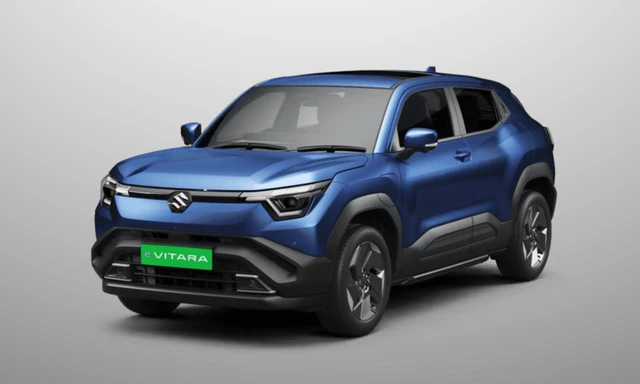 car&bike Team | Nov 29, 2025Maruti Suzuki e Vitara Launch On December 2: Here’s What We Know So FarThe e Vitara is the carmaker’s first shot in the electric vehicle segment, and here is everything that we know about it.4 mins read
car&bike Team | Nov 29, 2025Maruti Suzuki e Vitara Launch On December 2: Here’s What We Know So FarThe e Vitara is the carmaker’s first shot in the electric vehicle segment, and here is everything that we know about it.4 mins read car&bike Team | Nov 28, 2025Mahindra BE 6 Formula E Edition: Variants ExplainedThe BE 6 Formula E Edition is offered in two variants, FE2 and FE3, both paired with the larger 79 kWh battery pack.3 mins read
car&bike Team | Nov 28, 2025Mahindra BE 6 Formula E Edition: Variants ExplainedThe BE 6 Formula E Edition is offered in two variants, FE2 and FE3, both paired with the larger 79 kWh battery pack.3 mins read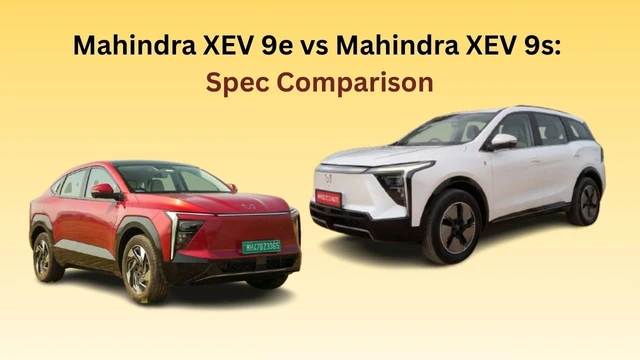 Bilal Firfiray | Nov 28, 2025Mahindra XEV 9e vs XEV 9s: Spec ComparisonMahindra has expanded its electric lineup with the all-new 7-seater XEV 9s. Being a third EV in the line-up after the eye-grabbing 9e, it's a good chance to compare the design, space, battery, range, pricing, and buyer suitability between these two siblings to help you decide which EV fits your needs.3 mins read
Bilal Firfiray | Nov 28, 2025Mahindra XEV 9e vs XEV 9s: Spec ComparisonMahindra has expanded its electric lineup with the all-new 7-seater XEV 9s. Being a third EV in the line-up after the eye-grabbing 9e, it's a good chance to compare the design, space, battery, range, pricing, and buyer suitability between these two siblings to help you decide which EV fits your needs.3 mins read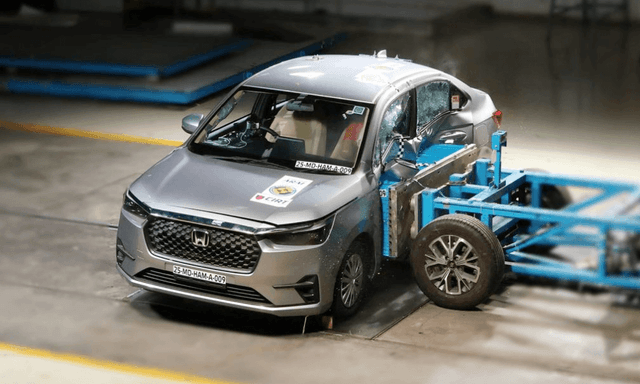 Jafar Rizvi | Nov 28, 2025Honda Amaze Secures 5 Stars In Bharat NCAP Crash TestsThe sub-compact sedan scored 28.33/32 points in Adult Occupant Protection and 40.81/49 points in Child Occupant Protection.2 mins read
Jafar Rizvi | Nov 28, 2025Honda Amaze Secures 5 Stars In Bharat NCAP Crash TestsThe sub-compact sedan scored 28.33/32 points in Adult Occupant Protection and 40.81/49 points in Child Occupant Protection.2 mins read car&bike Team | Nov 27, 2025BMW F 450 GS Production Begins At TVS PlantTVS Motor Company and BMW Motorrad have announced a landmark achievement of 200,000 units produced under their partnership.1 min read
car&bike Team | Nov 27, 2025BMW F 450 GS Production Begins At TVS PlantTVS Motor Company and BMW Motorrad have announced a landmark achievement of 200,000 units produced under their partnership.1 min read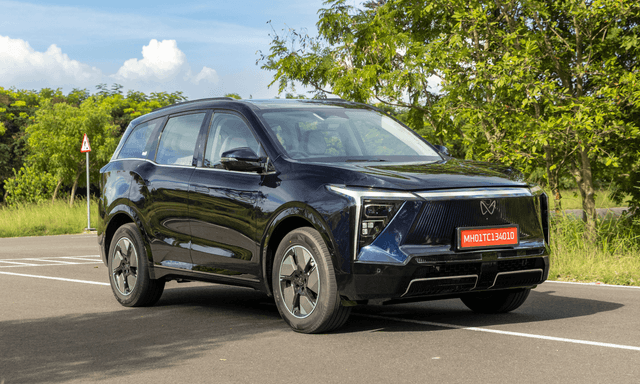 car&bike Team | Nov 27, 2025Mahindra XEV 9S: Variants, Features, Prices ExplainedThe XEV 9S is offered in four variants, with three battery pack options. Here is a rundown of what each variant gets.3 mins read
car&bike Team | Nov 27, 2025Mahindra XEV 9S: Variants, Features, Prices ExplainedThe XEV 9S is offered in four variants, with three battery pack options. Here is a rundown of what each variant gets.3 mins read
 Seshan Vijayraghvan | Nov 29, 2025Mahindra XEV 9S First Drive Review: Big Electric SUV, Bigger ExpectationsThe XEV 9S lands at a time when the EV crowd is growing fast. It’s a big, born-electric, three-row SUV that starts under 20 lakh. It sits close to the XUV700 in size, but the brief is very different. Here’s what it’s like on the road.11 mins read
Seshan Vijayraghvan | Nov 29, 2025Mahindra XEV 9S First Drive Review: Big Electric SUV, Bigger ExpectationsThe XEV 9S lands at a time when the EV crowd is growing fast. It’s a big, born-electric, three-row SUV that starts under 20 lakh. It sits close to the XUV700 in size, but the brief is very different. Here’s what it’s like on the road.11 mins read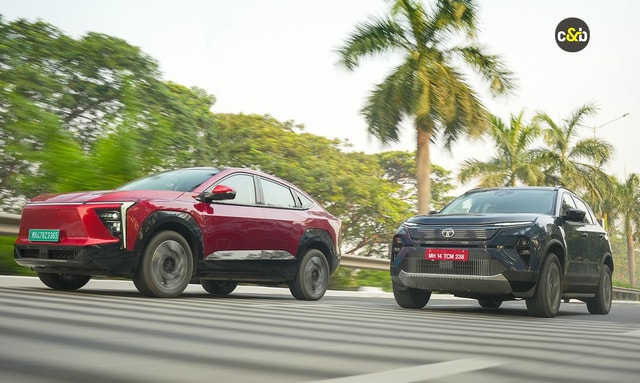 Bilal Firfiray | Nov 26, 2025Tata Harrier EV vs Mahindra XEV 9e: Battle Of India’s Electric TitansWhen India made two electric SUVs battle it out, the winner is the buyer. They get a choice to take home what’s best suited for them – and read on to find out which one is better for YOU.1 min read
Bilal Firfiray | Nov 26, 2025Tata Harrier EV vs Mahindra XEV 9e: Battle Of India’s Electric TitansWhen India made two electric SUVs battle it out, the winner is the buyer. They get a choice to take home what’s best suited for them – and read on to find out which one is better for YOU.1 min read Janak Sorap | Nov 19, 2025Hero Xpulse 210 Vs Kawasaki KLX 230 Comparison Review: Dual-Sport DilemmaWith a price difference of just Rs 12,000, which of the two dual-sport motorcycles is meant for you?1 min read
Janak Sorap | Nov 19, 2025Hero Xpulse 210 Vs Kawasaki KLX 230 Comparison Review: Dual-Sport DilemmaWith a price difference of just Rs 12,000, which of the two dual-sport motorcycles is meant for you?1 min read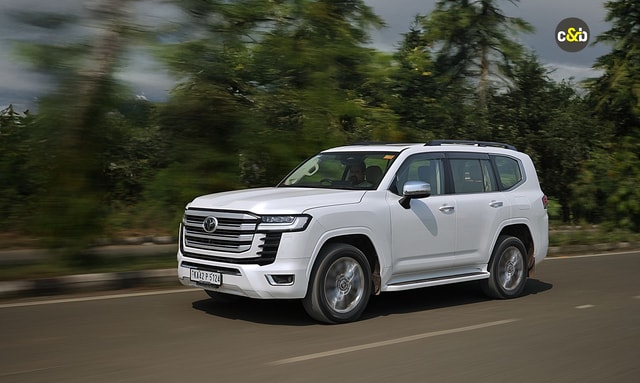 Jaiveer Mehra | Nov 17, 20252025 Toyota Land Cruiser 300 Review: Beast From The EastThe Land Cruiser name may have a long and storied history, but does it fit the bill for an Rs 2 crore-plus SUV in India?13 mins read
Jaiveer Mehra | Nov 17, 20252025 Toyota Land Cruiser 300 Review: Beast From The EastThe Land Cruiser name may have a long and storied history, but does it fit the bill for an Rs 2 crore-plus SUV in India?13 mins read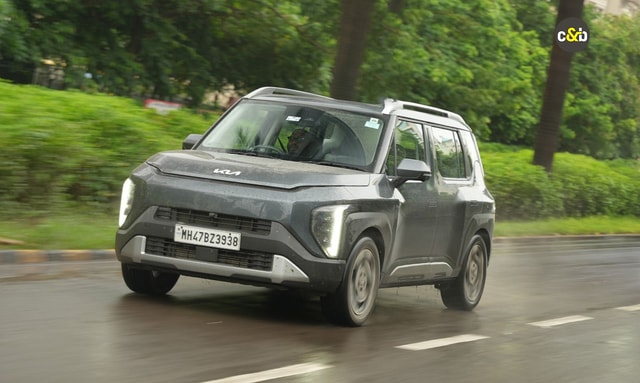 Seshan Vijayraghvan | Nov 17, 2025Kia Syros 1.0 Turbo Petrol: 6000 km Long-Term Review – Final Report!I lived with the Syros for more than 6000 km, over 3 months, and in this final report, I am going to talk about the Pros, the Cons, and everything in between.1 min read
Seshan Vijayraghvan | Nov 17, 2025Kia Syros 1.0 Turbo Petrol: 6000 km Long-Term Review – Final Report!I lived with the Syros for more than 6000 km, over 3 months, and in this final report, I am going to talk about the Pros, the Cons, and everything in between.1 min read

































































































































